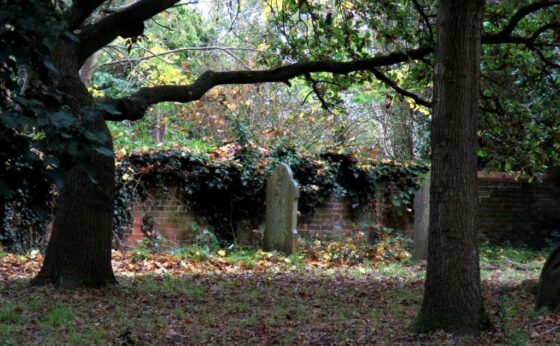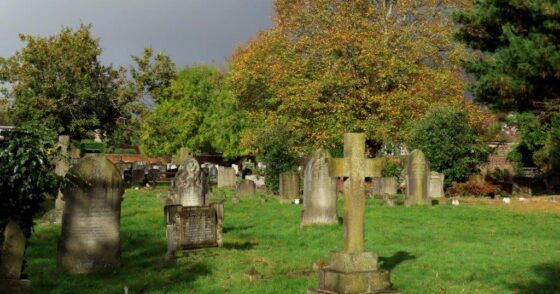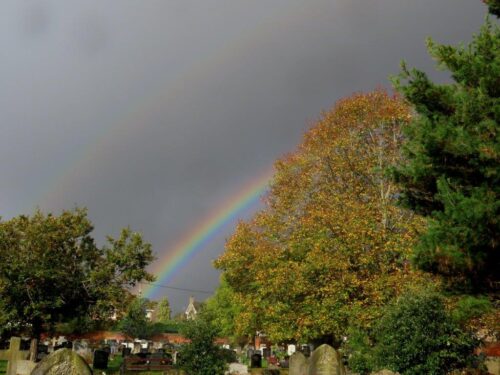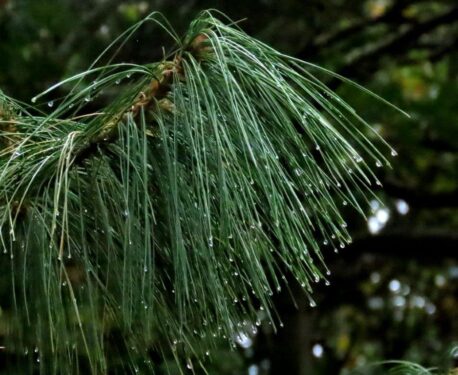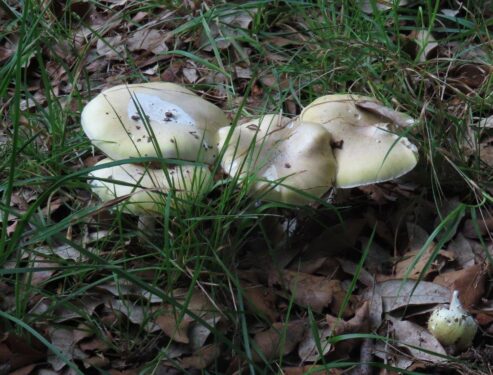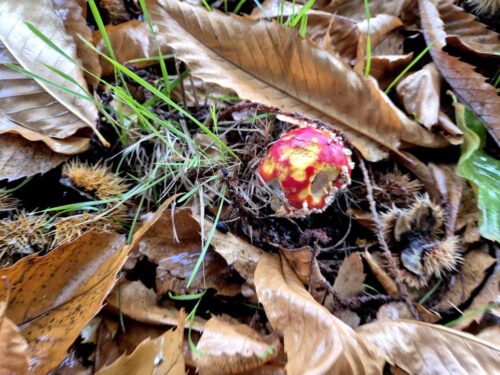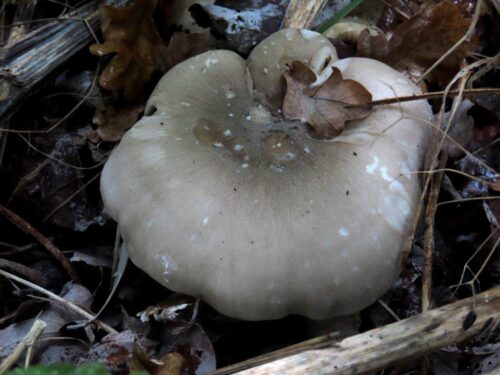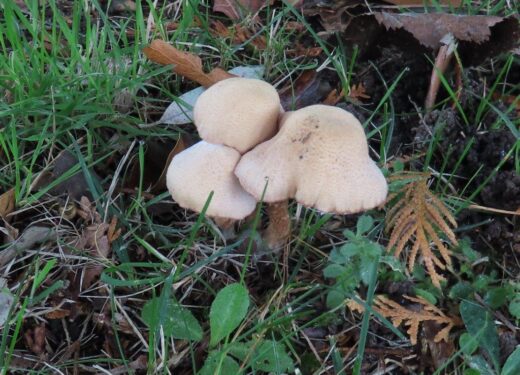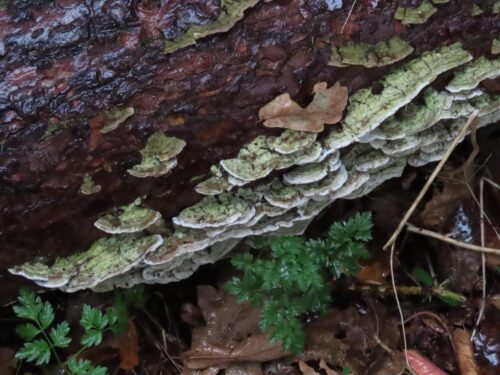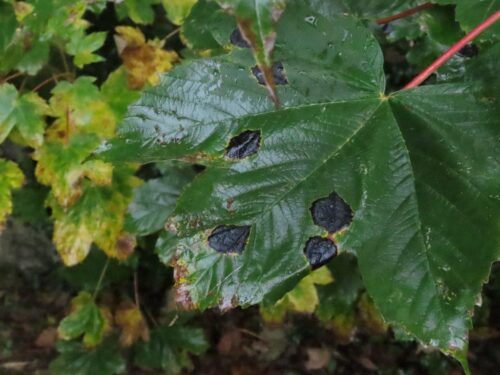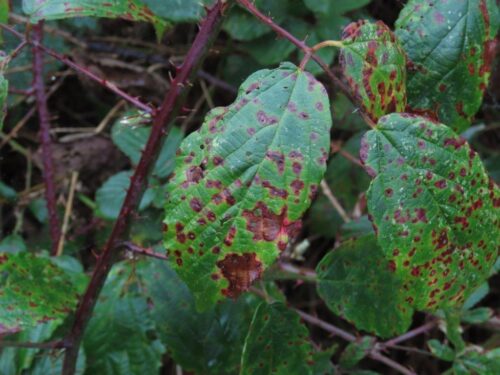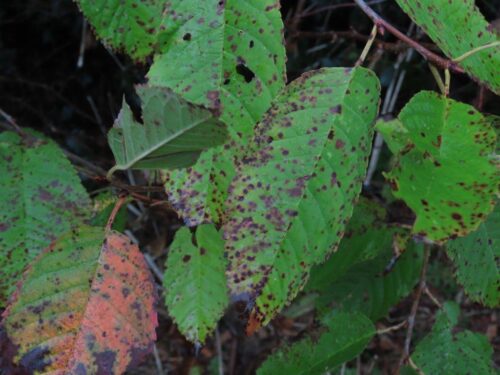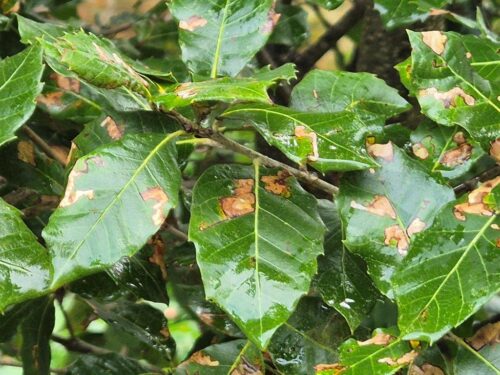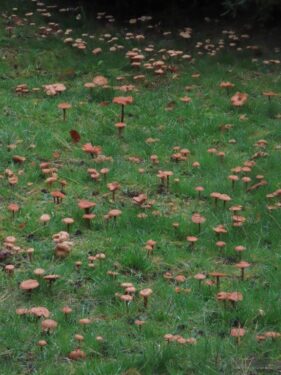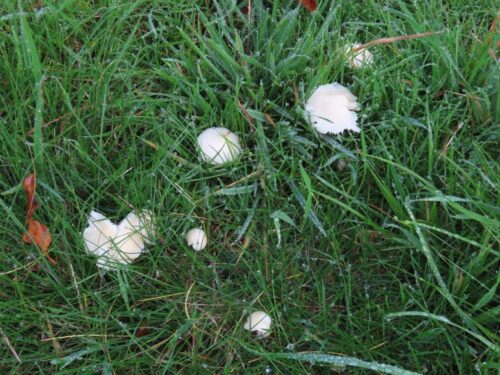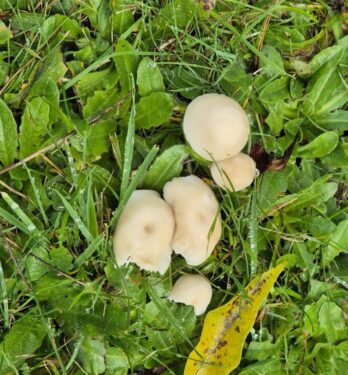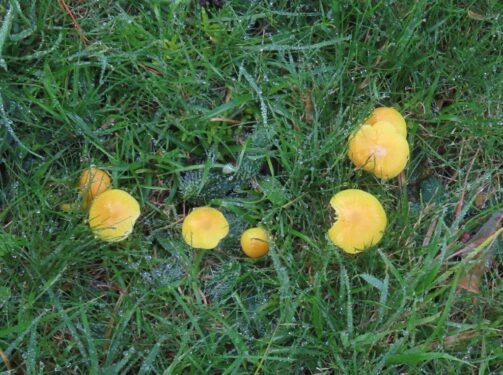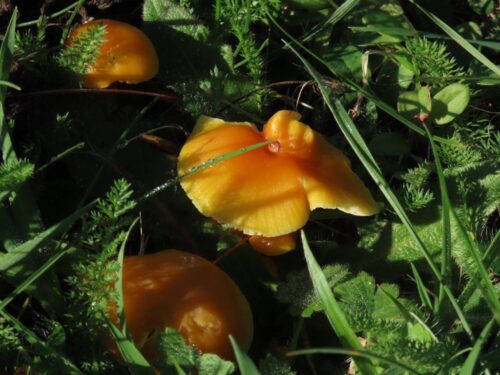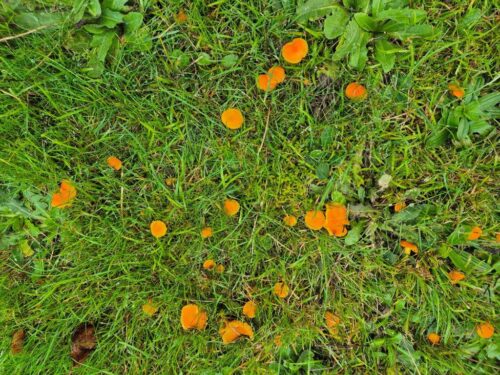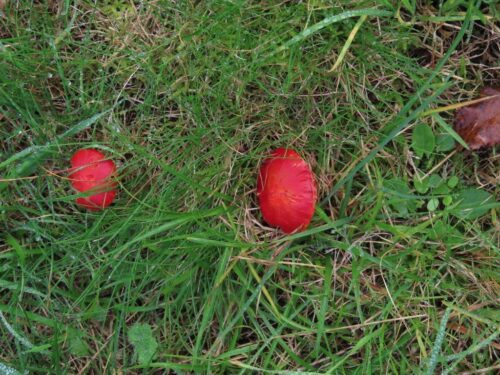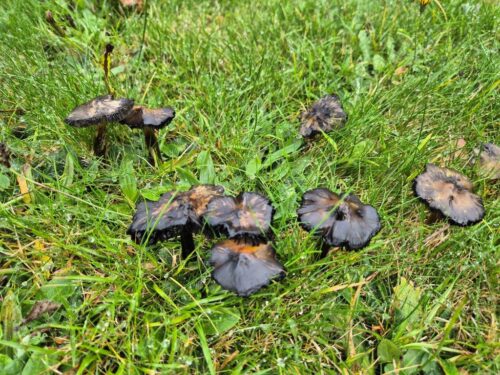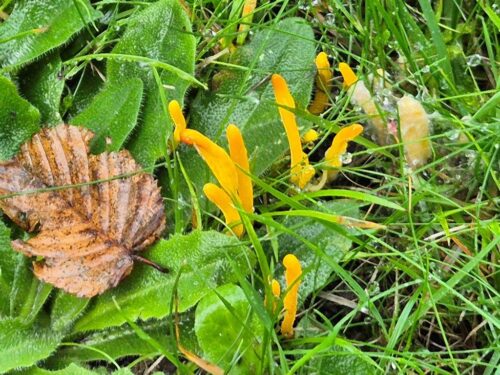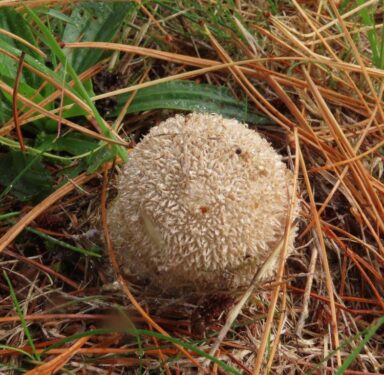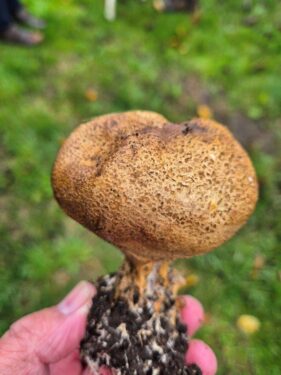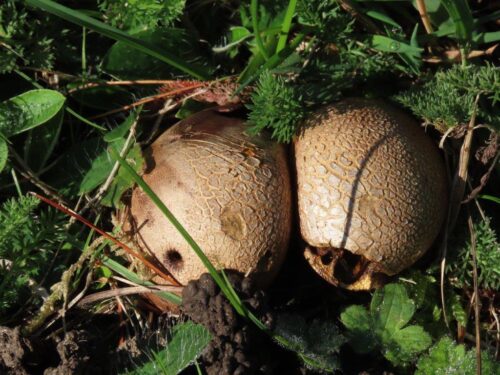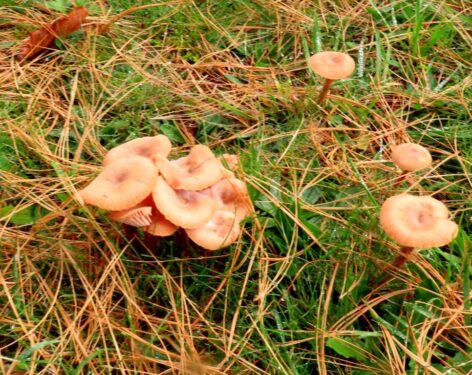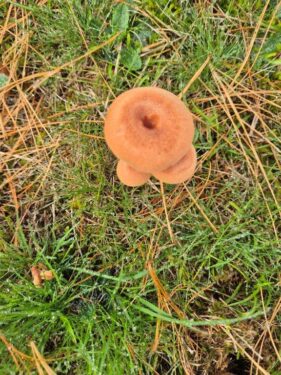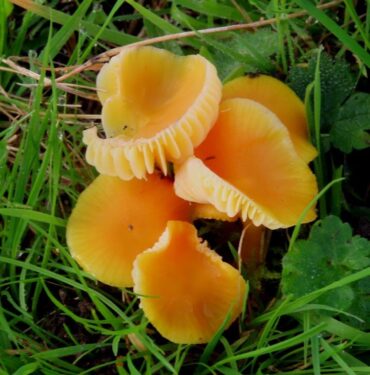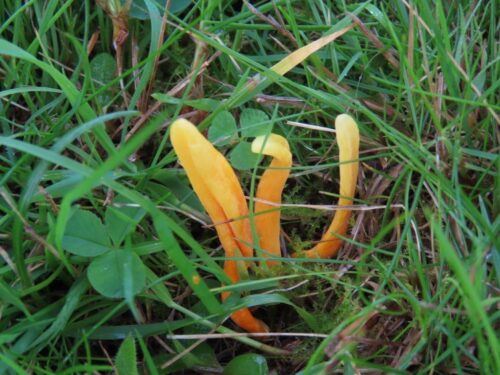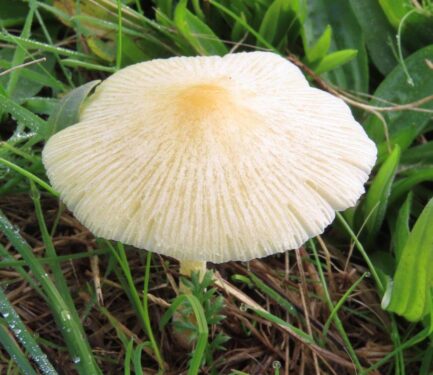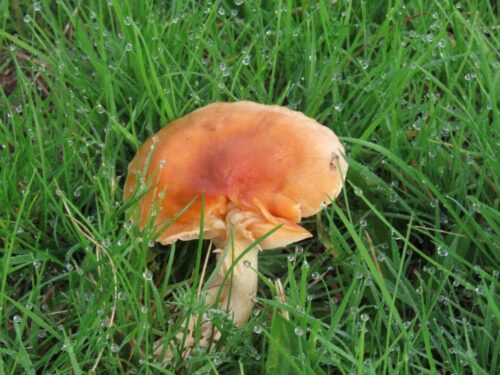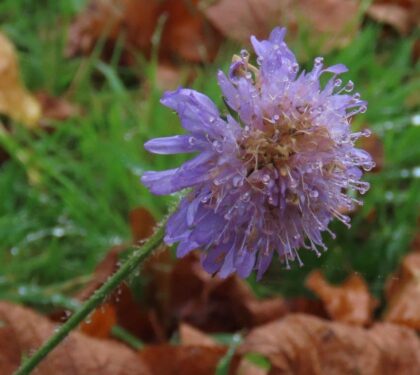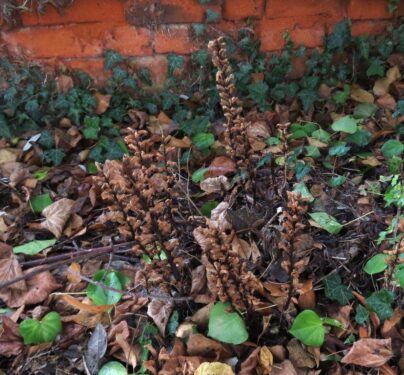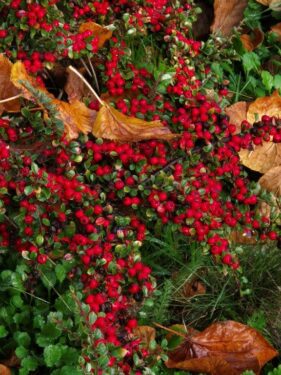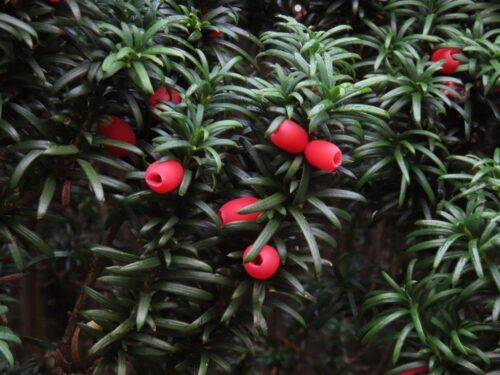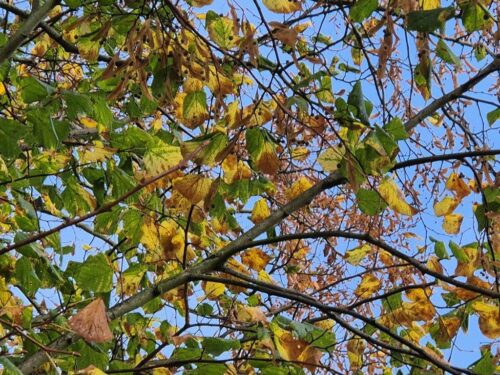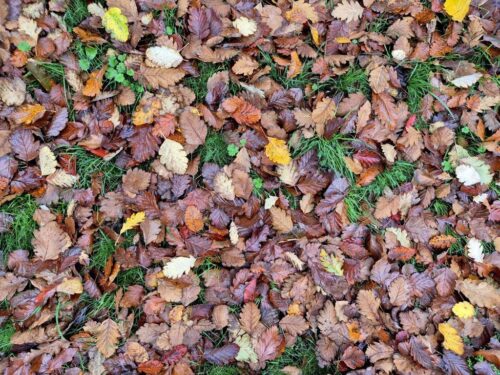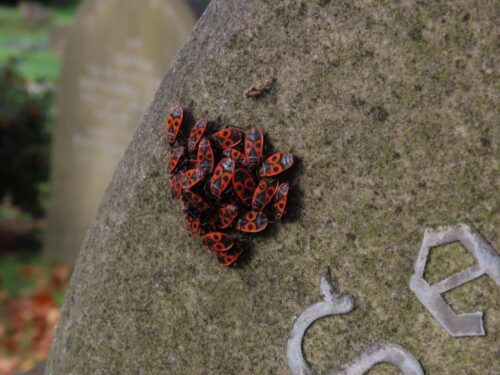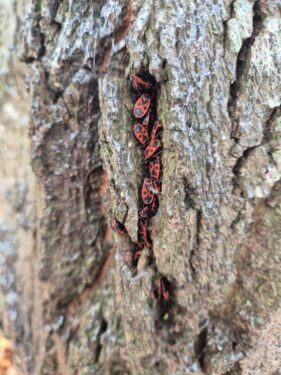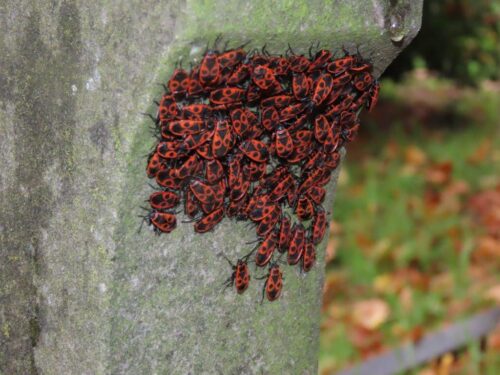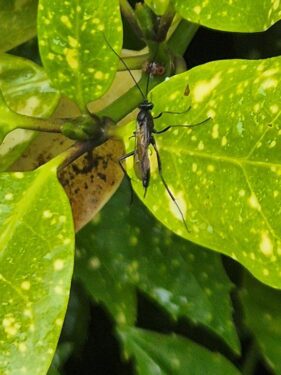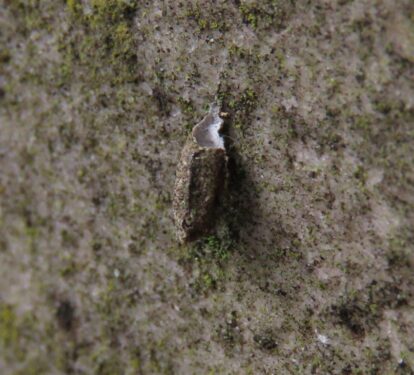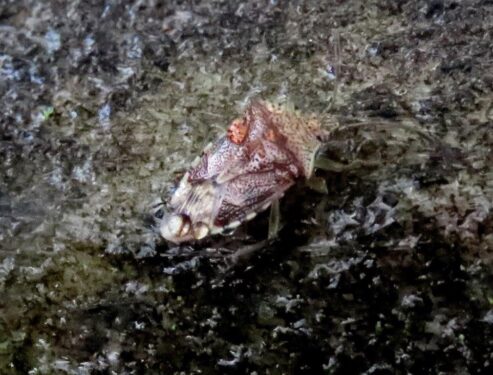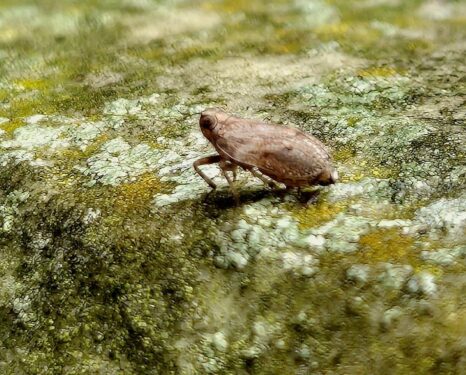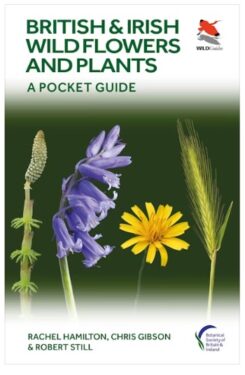#WildEssex today resumed its tradition of offering a fungi walk in November. This year we stayed local to Wivenhoe, exploring both cemeteries to hunt out not only fungi, but also foliage, fruits and an interesting addition to our town this year – Firebugs! An ‘effing’ good time was in prospect!!
But the weather dampened things a little. Light rain for much of our two hours (we stayed in the wooded Old Cemetery when it turned more purposeful) gave way to occasional warm sunshine, and a magnificent double rainbow. And the raindrops certainly embellished the tips of the beautiful Bhutan Pine…
The fungi are always unpredictable, even in these cemeteries, renowned as one of the best locations for fungus-hunting in the area. But this time, we managed to hit the peak (probably) of a good year. Under the trees there were numerous Death Caps (appropriate for cemeteries!), a single Fly Agaric, parasols and Clouded Agarics:
In addition we discovered fungi growing on dead wood (Turkey Tail types) and microfungi on leaves: Sycamore Tar Spot plus various rust fungi, not to be confused with leaf-mines, galls and other blemishes:
In the more open New Cemetery, the important grassland fungi put on a great show, with six or more waxcaps, from white, through yellow, orange and scarlet, to black; Golden Spindles; puffballs and earthballs; milkcaps and cheesecaps; plus numerous LBJs (Little Brown Jobs).
In a footnote to the above, just a couple of weeks after this walk, we were out on the King George Field. Grassland fungi were coming up there too, including at least four waxcaps and one club fungus (photos below). I have not seen fruiting like this at this location here since 1987. It was this half-remembered diversity that guided my choice of the southwest corner for the first Wivenhoe haymeadow seven years ago. Comprehensive fungal survey certainly needs patience!
And the rich flora was not completely over either, with Field Scabious, Mouse-eared Hawkweed, Ox-eye Daisy and Yarrow still flowering, although the Ivy Broomrape (possibly its only site in Essex, discovered this summer) was well over. Having said that , as a parasitic plant with no chlorophyll it always looks dead anyway!
Fruits abounded on Cotoneaster, Holly, Yew, Ivy and Stinking Iris – all important resources for birds:
And autumn-tinted foliage lit up the paths as we walked through the cemeteries:
As always we were on the look-out for insects. Some gravestones (particularly those under Lime trees) proved popular meeting places for large numbers of Firebugs. These lovely creatures have only been known in UK for a few years, and now have a foothold here in Wivenhoe. How they manage to disperse and spread is all rather mysterious as the vast majority of individuals do not have wings and so cannot fly.
Other invertebrates included a rather splendid ichneumon wasp, Virgin Bagworm moths and a single Parent Bug, while the final discovery of the day was an Issus coleoptratus, a bug which we have seen very few of in recent years.
In addition to general nature walks, this year WildEssex have introduced ‘Botany Club’ events. These are for anyone interested in learning more about the craft of identifying wildflowers, and no previous experience is required. Using Chris’ book ‘British & Irish Wild Flowers and Plants’, a few samples are collected each time and then the process of identifying explained. More events of this type are to be arranged next year. For more details of these, or our other, events please contact Jude at jmgibson1959@btinternet.com.

